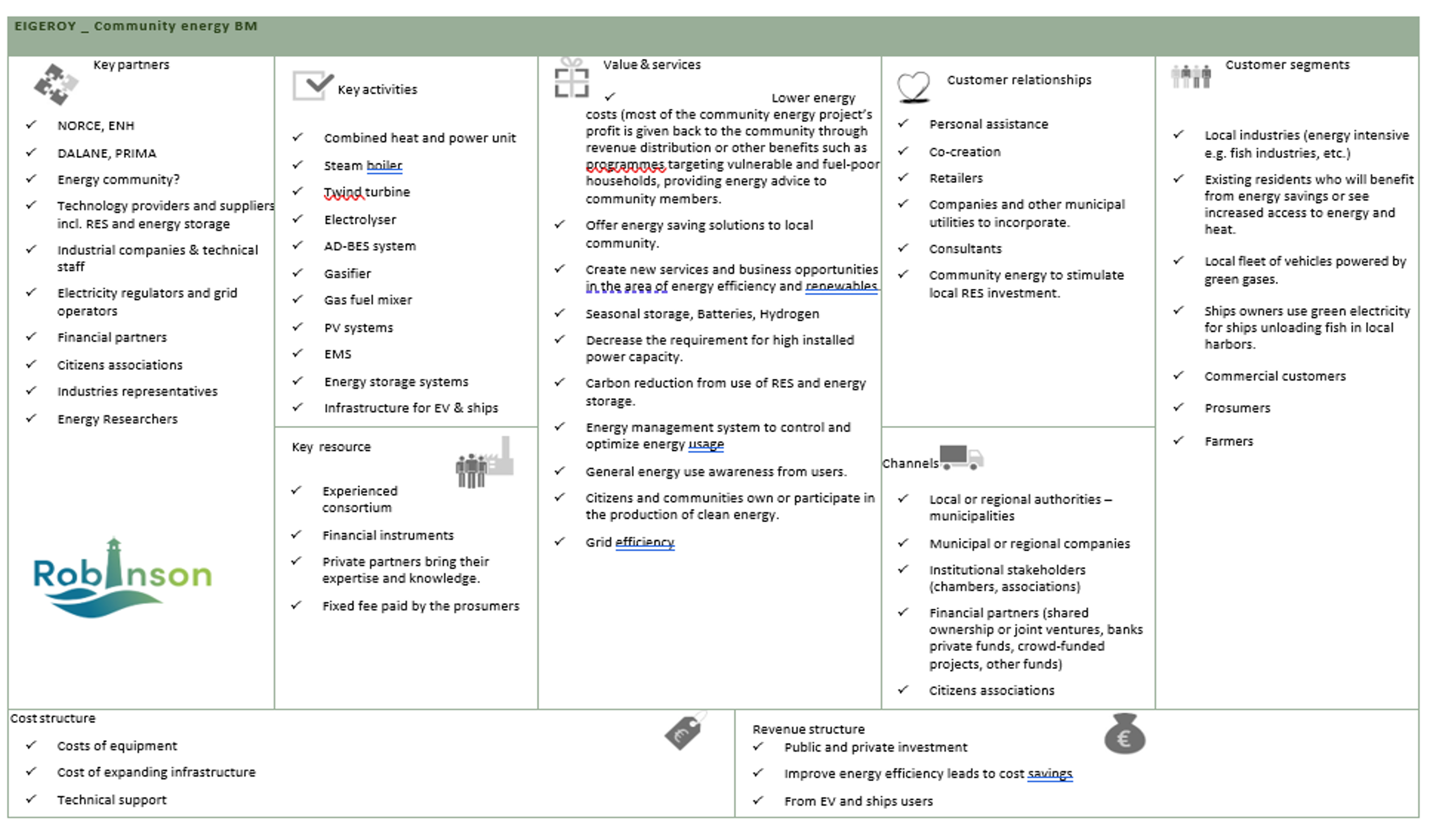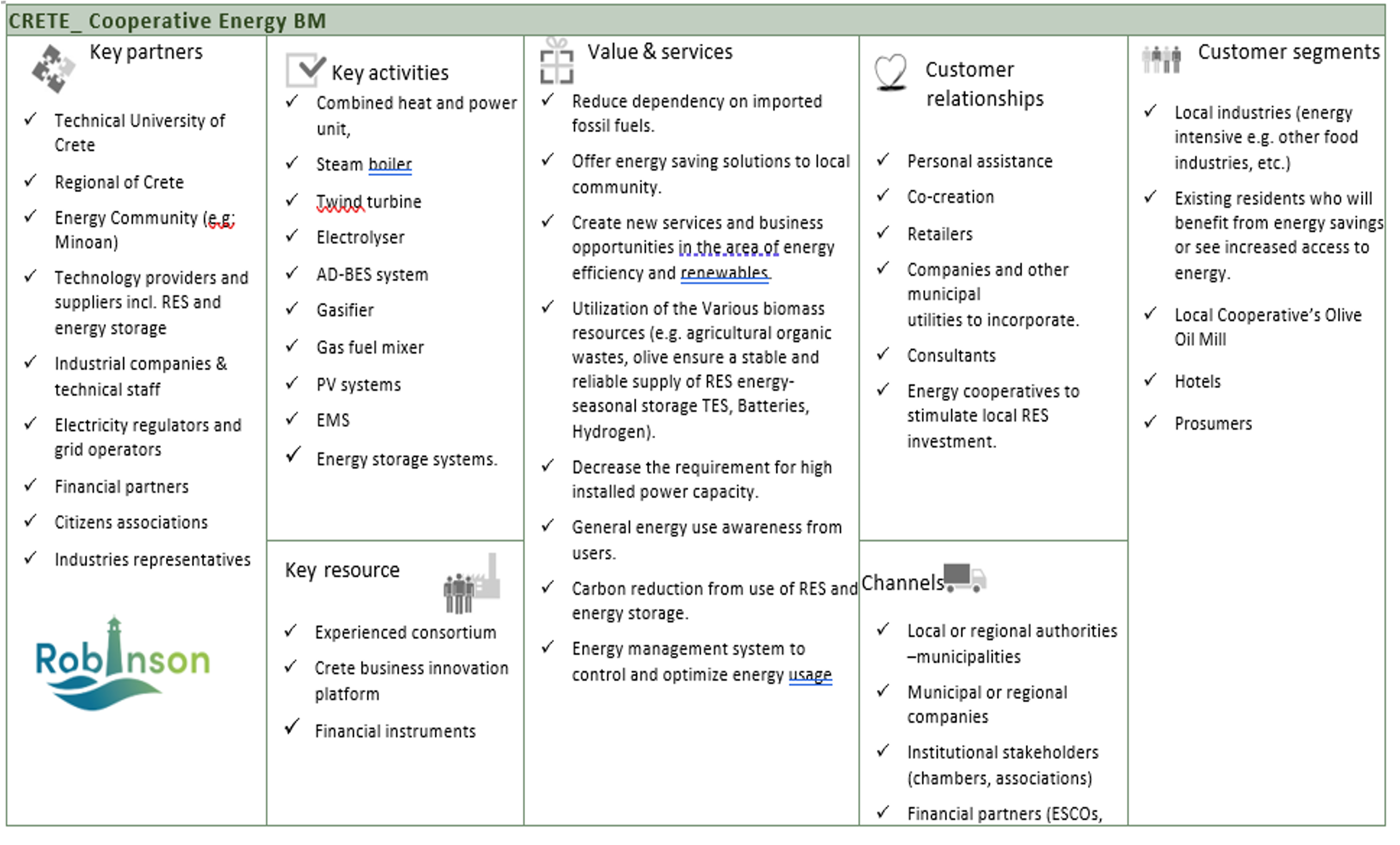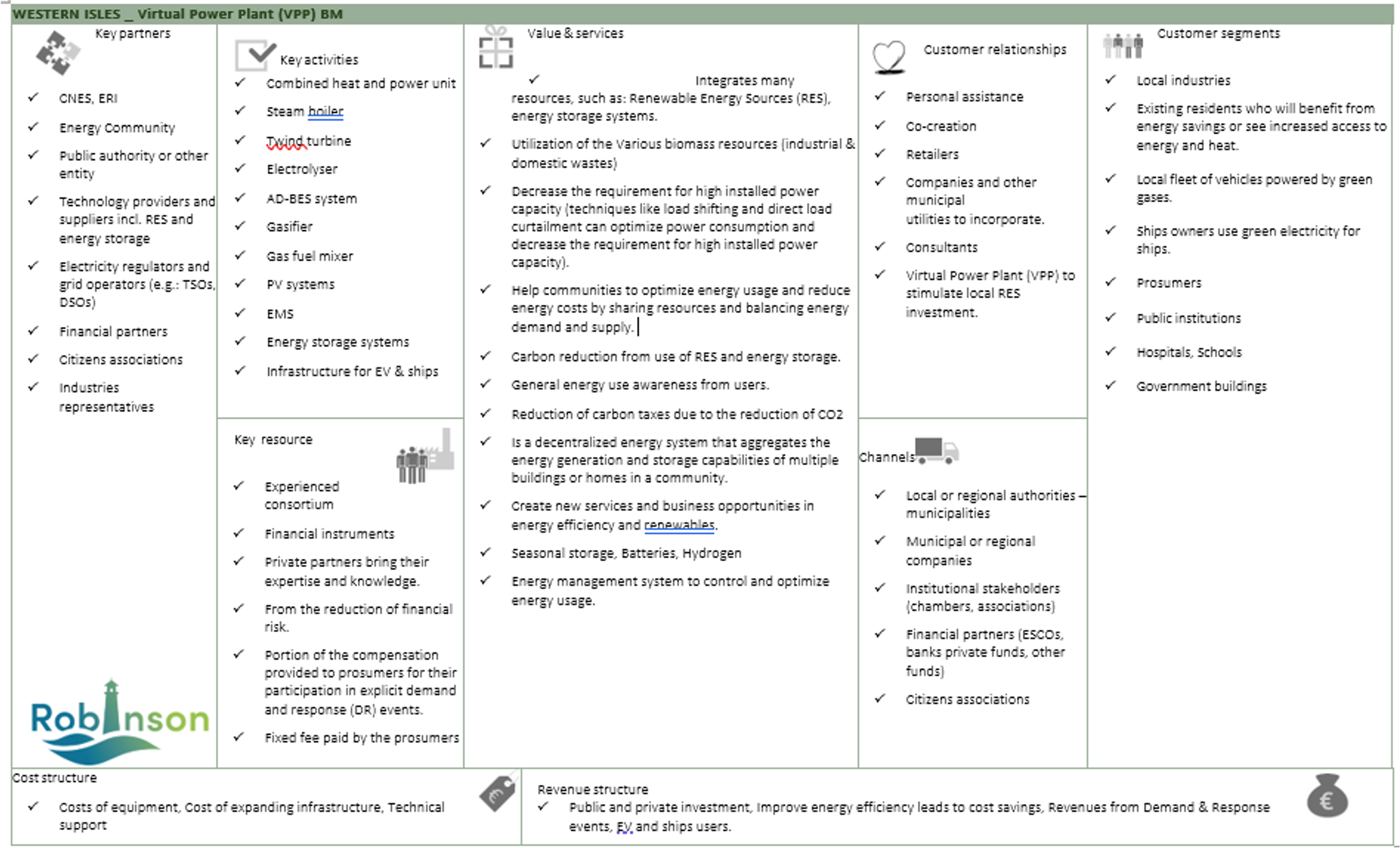Business Model Development
Description- Guidelines
Business Model Tools
1) Business Model Canvas: One of the most commonly used frameworks in the business literature for analysing firms’ business models is the Business Model Canvas (BMC). Created by Osterwalder and Pigneur in 2010 it consists of a strategic management template used for developing new business models and documenting existing ones (Barquet, et. Al, 2011; De Reuver et al. 2013). Additionally, documents business models in a simple, unbureaucratic and easily understandable way while at the same time supporting a uniform understanding of the business model within the company (Osterwalder and Pigneur, 2010). Through a visual chart, the BMC facilitates the representation of an organisation’s business logic in terms of how it is organizing its operations for creating, delivering, and capturing value (Schütz et al. 2021)
The BMC consists of nine interconnected elements. The 9 nine elements are described below:
- Customer Segments: The different groups of customers an organization will reach to provide a service or offer a product. It consists of a seminal step for each organization in order to identify for whom the solution is expected to create value and try to serve.
- Value Proposition: The value proposition describes the combination of products and services which provide value to the customer and provide solutions to the problems he/she faces. These products and services are what distinguish the product or service from its competitors.
- Revenue Streams: This element describes how an organization generates revenues from each Customer Segment.
- Channels: This element describes the different efficient and cost-effective channels that can be selected to communicate and deliver products and services to individual customer segments.
- Customer Relationships: The types of relationships an organization will establish with each Customer Segment to ensure the success of its business model. These relationships can take various different forms depending on the nature of the product or the service offered by the organization.
- Key Activities: Key activities comprise the most important processes that need to take place in order for a business model to work (e.g. designing, manufacturing, and delivering a product, software development, supply chain management etc.).
- Key Resources: The required resources needed to create value for an organization. These can be financial, technological, intellectual, human, etc.
- Key partners: The network of suppliers and partners that assist the organizations' business models work. Organizations establish relationships with these partners to optimize processes or acquire resources.
- Cost Structure: Cost structure includes all the costs incurred to operate a business model (e.g, manufacturing and R&D costs etc.). It consists of one of the most important element of the BMC since it can be a decisive factor to influence the selection between different business models.
2) Value Proposition Canvas
Similar to the Business Model Canvas, the Value Proposition Canvas (VPC) was created by Osterwalder, Pigneur, Bernarda and Smith ( 2014 ) for the purpose of highlighting the value proposition as an important part of every Business Model. In fact, the BMC and the VPC tools work in conjunction since the VPC tool builds on the BMC and is used as a complement as it lays more emphasis of on two elements of the BMC: the value proposition and the customer segment. Thus, the main purpose of the VPC tool is to describe in detail the customers’ demands and needs in order to facilitate organizations to be more customer centric and rightly position their products and services to meet these demands and needs. As such, facilitate the understanding of the customer needs and by positioning the services and products to meet these needs the VPC tool plays a crucial role in the successful and accurate development of a Business Model ( Teece, 2010 ).
Business Models for energy communities in ROBINSON cases
Business Model Canvas for the demonstration island of Eigeroy, Western Islands and Crete.
During project implementation five (5) energy business models were identified and accordingly five Business Model Canvases were developed for Eigeroy, Western Isles and Crete. The analysis of these Models indicated the different actors, customers, services, revenues, resources, etc, that each model provides making the best use of all benefits brought to the clients and local stakeholders the technologies and innovations.
| A/A | Business Model | Demo Case |
| 1 | Public-Private Partnership (PPP) | Eigeroy |
| 2 | Energy Services Company (ESCO) | Eigeroy |
| 3 | Community Energy | Eigeroy |
| 4 | Virtual Power Plant (VPP) | Eigeroy, Western Isles |
| 5 | Energy Cooperatives | Eigeroy, Crete |
Implementation Phase



References and Sources for further reading
- Strategyzer, (2021a) ‘The Business Model Canvas’. [online]. Available at: https://www.strategyzer.com/canvas/business-model-canvas.
- Schütz, F., Muschner, A., Ullrich, R., and Schäfer, A. (2021) ‘Innovation Ecosystem Strategy Tool’. Center for Responsible Research and Innovation CeRRI at Fraunhofer IOA. [online] https://www.cerri.iao.fraunhofer.de/content/dam/iao/cerri/de/Leistungsspektrum/InnovationEcosystemStrategies/CeRRI_Innovation%20Ecosystem%20Strategy%20Tool_en.pdf
- Osterwalder, A., Pigneur, Y., Bernarda, G. and Smith, A. (2014) Value proposition design: how to create products and services customers want. John Wiley & Sons, Hoboken.
- Clean Energy Business Model Manual, November 2018, “C40 Cities Climate Leadership Group”.
